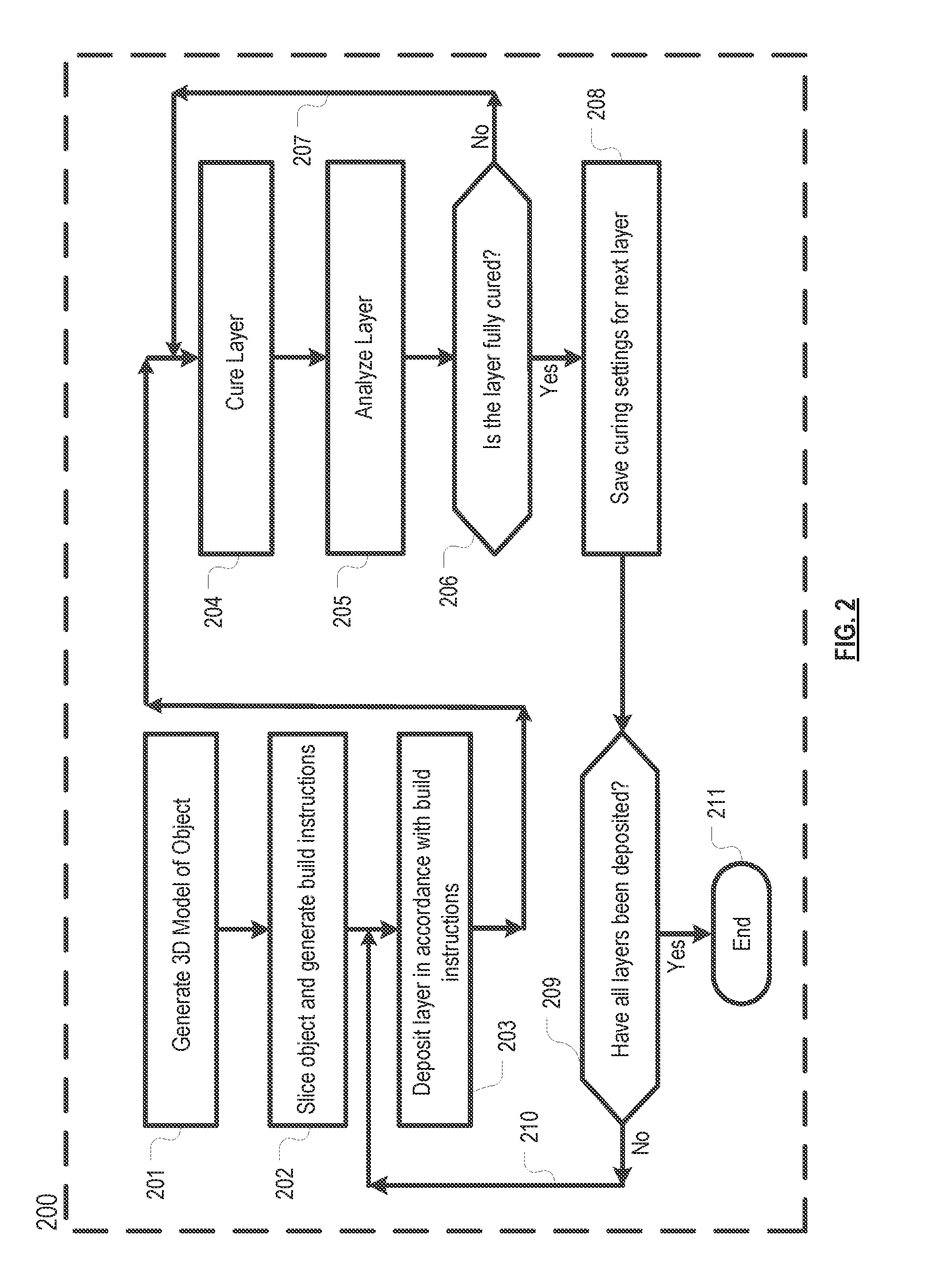System and method for additive manufacturing of thermoset polymers
a thermoset polymer and additive manufacturing technology, applied in the field of additive manufacturing, can solve the problems of long post-curing cycle, requiring a complex, programmable oven, and exhibit poor mechanical, thermal, electrical and chemical properties, and achieve the effect of facilitating the manufacture of pai-based objects and reducing manufacturing lead-tim
- Summary
- Abstract
- Description
- Claims
- Application Information
AI Technical Summary
Benefits of technology
Problems solved by technology
Method used
Image
Examples
Embodiment Construction
[0030]As discussed in the Background section, embodiments of the invention significantly reduce manufacturing lead-time for the fabrication, via additive manufacturing, of parts (or, more generally, “objects”) using thermosetting polymers, such as polyamide-imide. Additionally, embodiments of the invention also facilitate the manufacture of parts / objects comprising thermosetting polymer that are significantly larger than those made via existing processes.
[0031]In the illustrative embodiment, a modified fused filament fabrication (FFF) system and method are used to fabricate (“print”) the thermoset polymer-based objects. However, in light of this disclosure, those skilled in the art will be able to modify, as required, other additive-manufacturing apparatuses and processes, such as SLS or modified SLA, to print PAI-based objects in accordance with the present teachings.
[0032]Embodiments of the invention are directed to a system and process for the rapid curing of 3D-printed objects m...
PUM
| Property | Measurement | Unit |
|---|---|---|
| Area | aaaaa | aaaaa |
| Temperature | aaaaa | aaaaa |
| Time | aaaaa | aaaaa |
Abstract
Description
Claims
Application Information
 Login to View More
Login to View More - R&D
- Intellectual Property
- Life Sciences
- Materials
- Tech Scout
- Unparalleled Data Quality
- Higher Quality Content
- 60% Fewer Hallucinations
Browse by: Latest US Patents, China's latest patents, Technical Efficacy Thesaurus, Application Domain, Technology Topic, Popular Technical Reports.
© 2025 PatSnap. All rights reserved.Legal|Privacy policy|Modern Slavery Act Transparency Statement|Sitemap|About US| Contact US: help@patsnap.com



